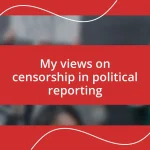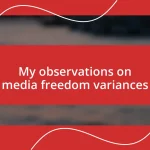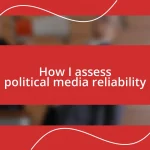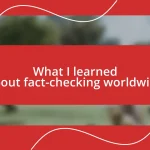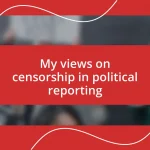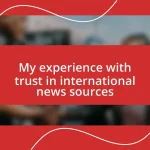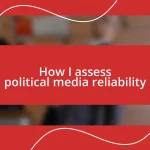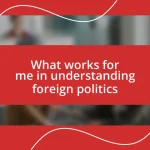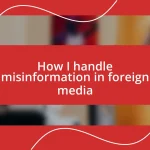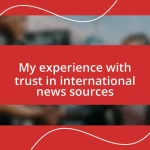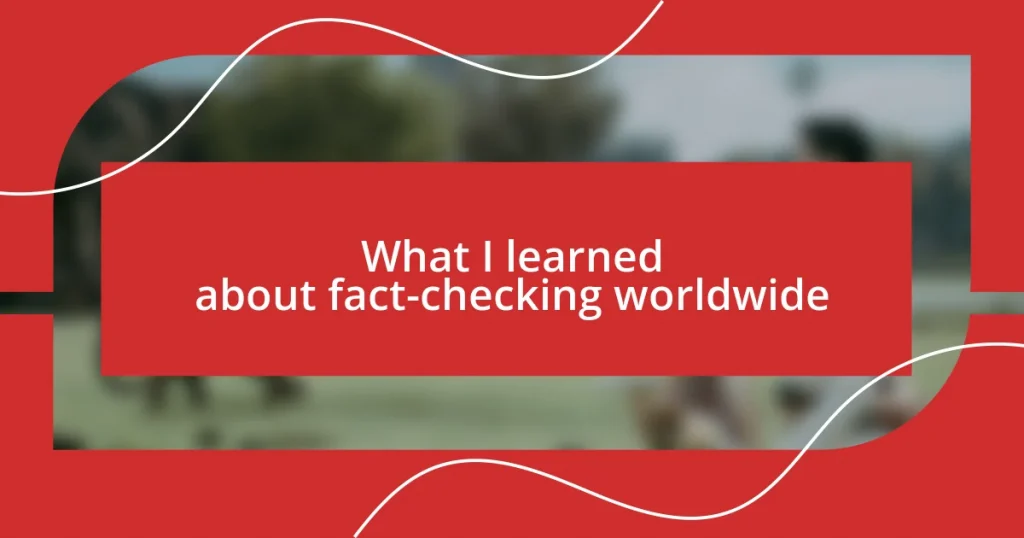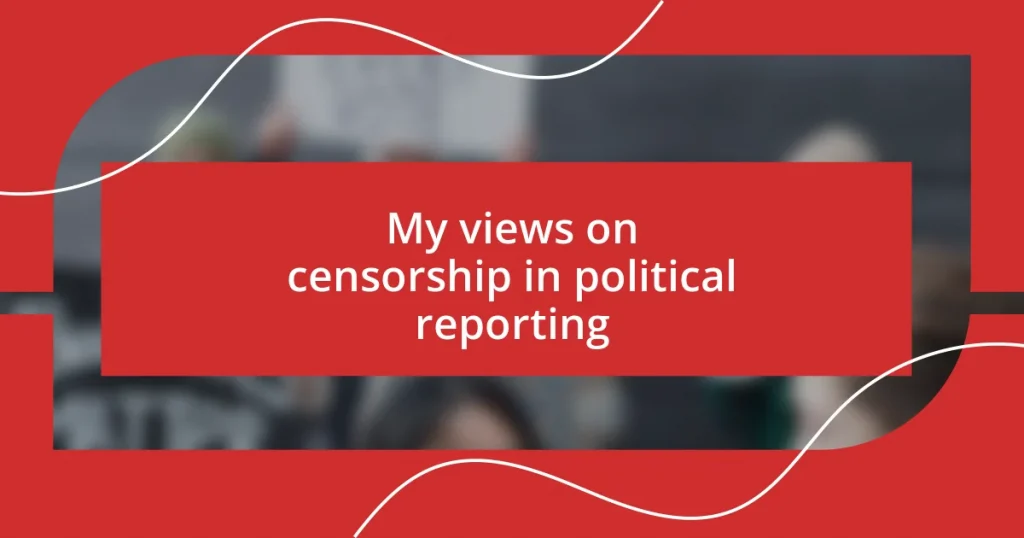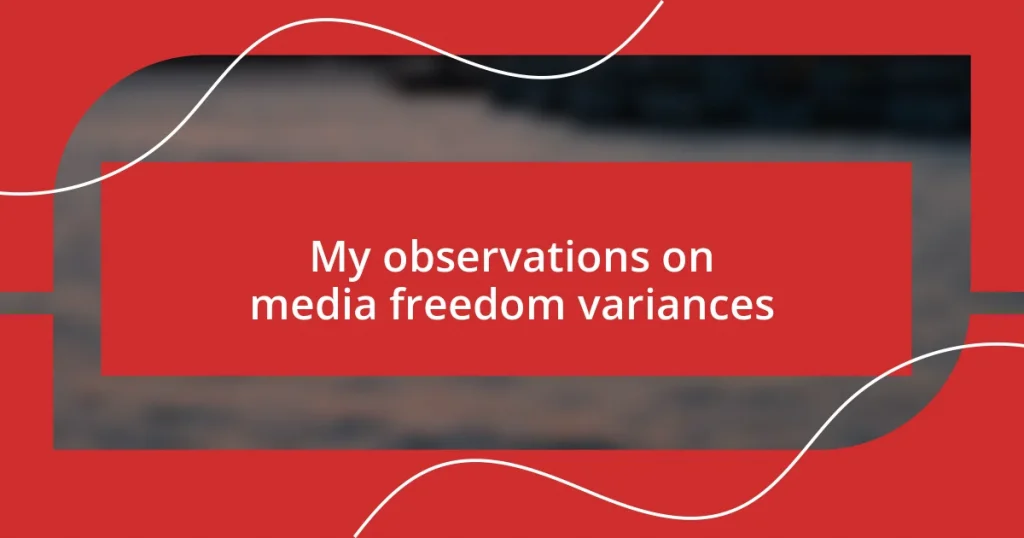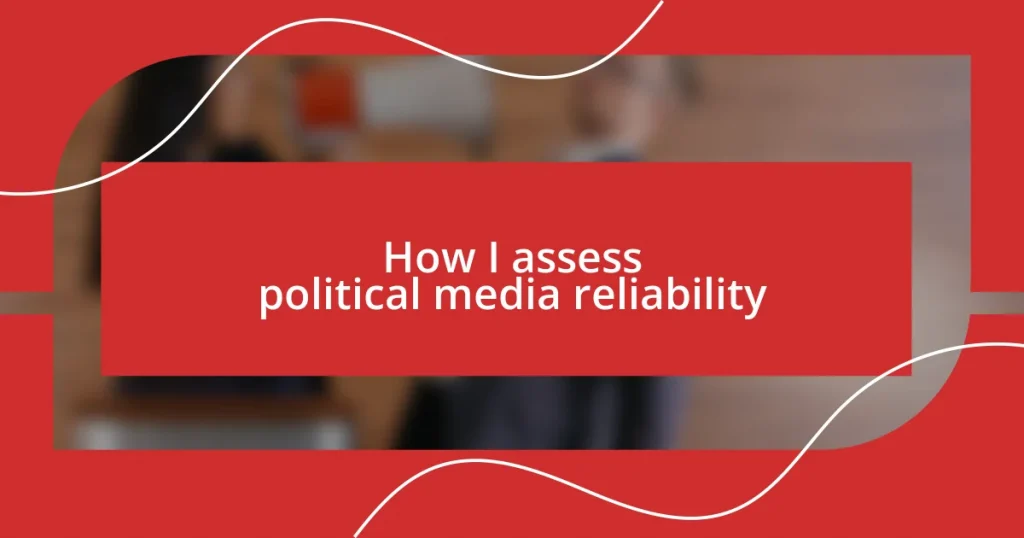Key takeaways:
- Fact-checking serves as an essential tool for combating misinformation, fostering trust and accountability in information sharing.
- Diverse global organizations are crucial in verifying facts and raising awareness about misinformation, employing various effective methodologies, including technology and community collaboration.
- Evaluating fact-checking sources based on transparency, credibility, and responsiveness enhances the public’s trust in their accuracy and effectiveness.
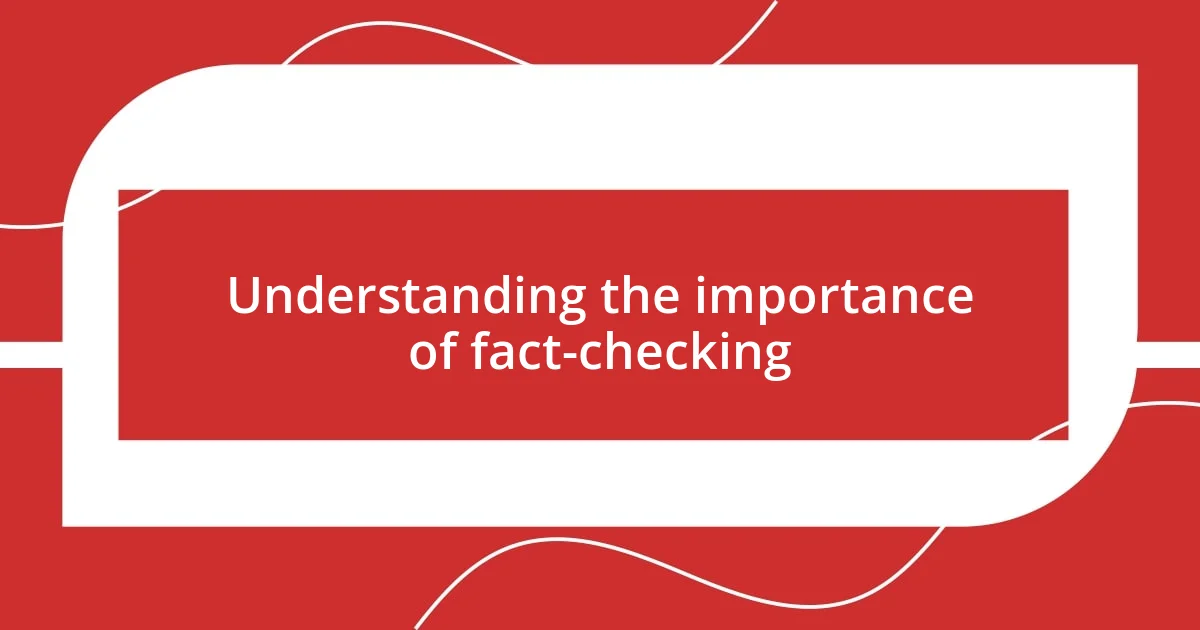
Understanding the importance of fact-checking
Fact-checking is like a protective shield in our fast-paced information age. I remember reading an article that claimed a major study had found a miraculous cure for a disease. It was compelling but, after a quick check, I discovered it was based on incomplete information. This moment highlighted for me that without fact-checking, we risk elevating misinformation to a status it doesn’t deserve.
The emotional weight of sharing false information can be heavy. I once unknowingly forwarded a deeply misleading meme to friends, only to later realize it perpetuated an unfounded rumor. It made me question how often we unintentionally contribute to the noise rather than clarity. Isn’t it unsettling to think we could unknowingly mislead those we care about?
Fact-checking fosters a culture of trust and accountability. When we engage with credible sources and verify information, we model behavior that encourages others to do the same. This simple act of diligence can create a ripple effect, prompting deeper discussions and fostering an informed community. Have you ever thought about how your effort to fact-check might inspire someone else to question or investigate further?
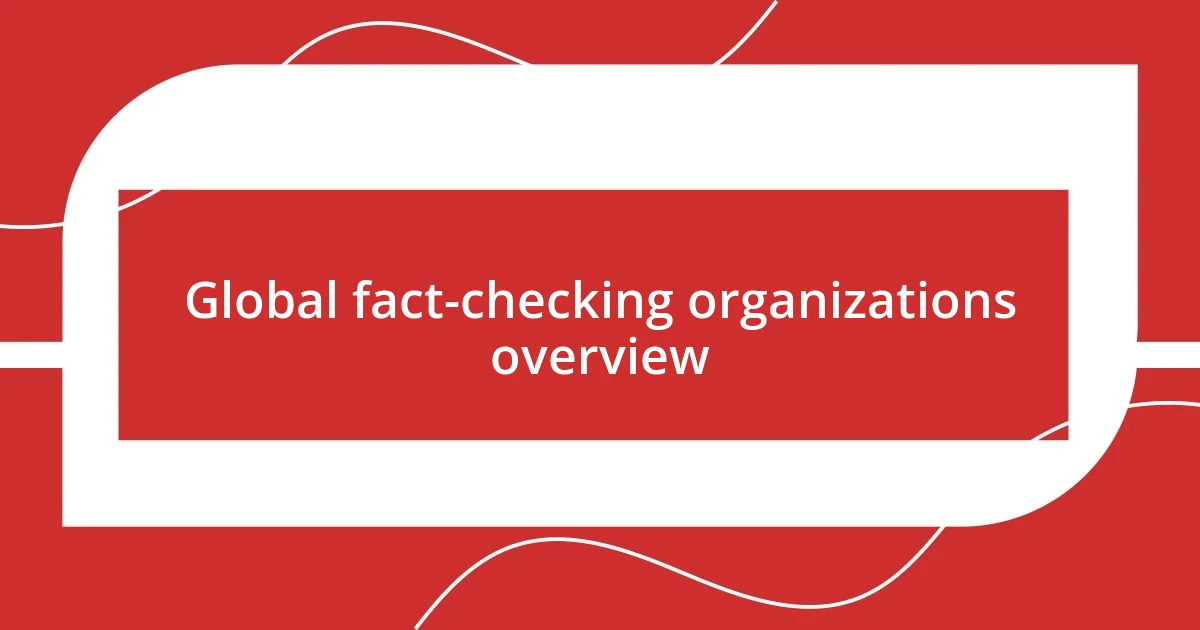
Global fact-checking organizations overview
When I dug into the world of global fact-checking organizations, I was struck by how diverse the landscape is. These organizations play a crucial role in fighting misinformation, ensuring that the public has access to reliable information. I remember attending a conference where representatives from various organizations discussed their unique approaches. It was inspiring to see how their combined efforts create a tapestry of accountability that transcends borders.
Here’s a brief overview of some prominent global fact-checking organizations:
- FactCheck.org (USA): A project of the Annenberg Public Policy Center, it’s dedicated to reducing deception and confusion in U.S. politics.
- Full Fact (UK): This organization focuses on fact-checking claims made by politicians and the media, actively working to promote transparency.
- AFP Fact Check (France): Part of the Agence France-Presse, it provides multilingual fact-checking services across various platforms, ensuring global reach.
- African Fact-checking Alliance: A network aimed at tackling misinformation in Africa, fostering collaboration among local fact-checkers.
- Chequeado (Argentina): Known for its interactive platform, it engages users directly and encourages civic participation in fact-checking.
These organizations not only verify facts but also aim to raise awareness about misinformation, and I believe it’s this proactive education that makes them indispensable.
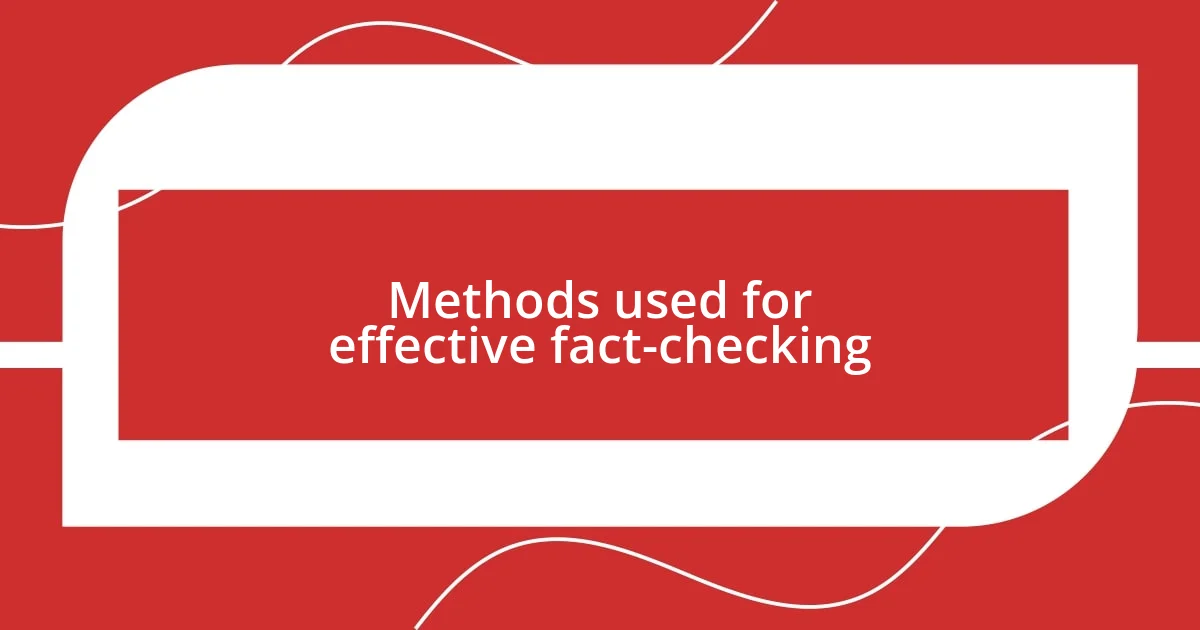
Methods used for effective fact-checking
When it comes to effective fact-checking, one of the key methods I’ve come across is the use of structured verification protocols. These protocols often involve cross-referencing multiple credible sources to confirm the accuracy of a claim. I’ve seen firsthand how this method not only clarifies the truth but also builds confidence in the information being presented. For instance, when I recently encountered a sensational headline about climate change, I methodically checked its claims against scientific reports and reputable news articles, which revealed important nuances that the original article had overlooked.
Another fascinating method is the use of technology in fact-checking. Tools like automated fact-checking software can swiftly analyze large volumes of information, pinpointing potential inaccuracies. I remember exploring one such tool during a workshop, and I was amazed at how quickly it sifted through vast data to highlight discrepancies. The integration of technology is transforming the landscape of fact-checking, making it more efficient and accessible, especially for issues trending in real-time.
A third effective strategy emerges from collaboration within the fact-checking community. Organizations often share resources, data, and even expertise to combat misinformation collectively. I had an enlightening discussion with a fact-checker who emphasized the impact this teamwork can have on their outreach efforts. By pooling insights and strategies, they’ve developed campaigns that resonate with audiences, ensuring that the public is not only informed but also engaged in the critical task of verifying information.
| Method | Description |
|---|---|
| Structured Verification Protocols | Cross-referencing multiple credible sources to affirm the accuracy of claims. |
| Use of Technology | Employing automated software to analyze vast amounts of data for discrepancies in real-time. |
| Community Collaboration | Working together with other organizations to share resources and amplify fact-checking efforts. |
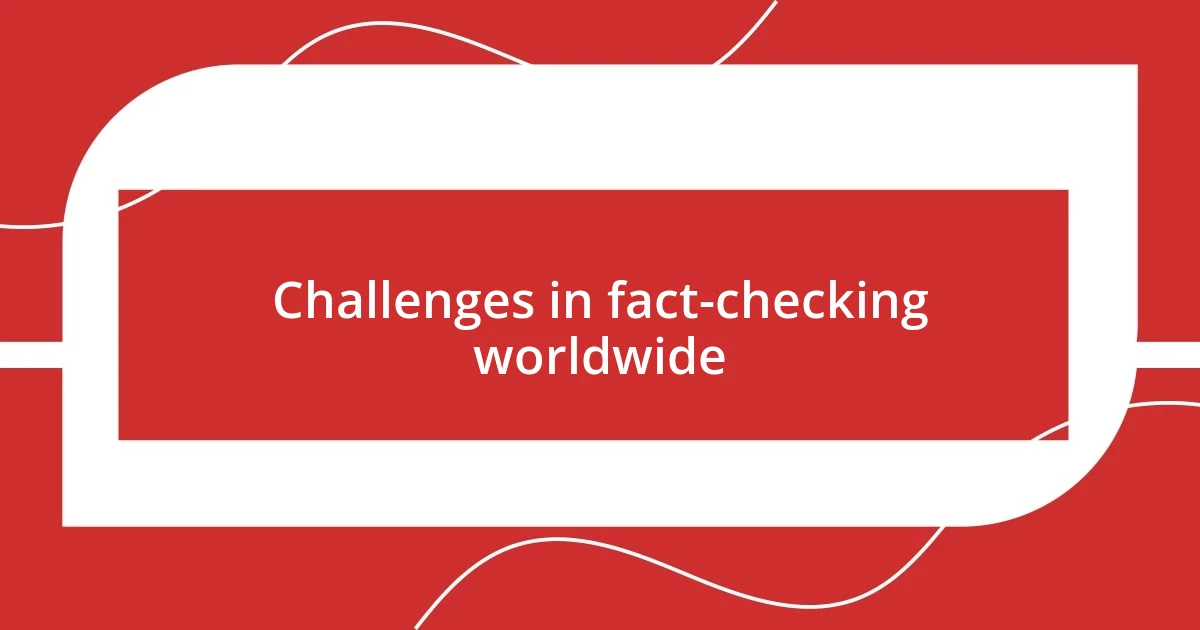
Challenges in fact-checking worldwide
The challenge of keeping up with the sheer volume of misinformation is daunting for fact-checkers worldwide. When I think back to a recent social media storm I encountered, it felt overwhelming to see so many false narratives circulating simultaneously. How can one organization possibly keep pace with that? This relentless barrage can dilute the impact of even the most dedicated fact-checking efforts, as accurate information struggles to stand out amid the noise.
Another significant hurdle is the regional and cultural barriers that often impede fact-checking in certain areas. I recall chatting with a colleague who works in a developing country, and she shared her struggles with access to reliable sources. Not only did she have to verify information, but she also had to navigate a web of local languages and dialects, which added layers of complexity. It made me appreciate the privilege of having access to a wealth of information at my fingertips, yet it also made me wonder: how much more misinformation proliferates in regions where resources are scarce?
Then there’s the trust issue. I remember a lively debate I had with friends who were skeptical of fact-checking organizations. They questioned the motives behind these groups and whether they could truly be objective. This skepticism is often rooted in broader societal divisions and can create a significant barrier to the acceptance of corrected information. I’ve seen firsthand how crucial it is to build relationships and establish credibility within communities to foster trust in fact-checking efforts. After all, if people don’t believe in the truth, how can we combat misinformation effectively?
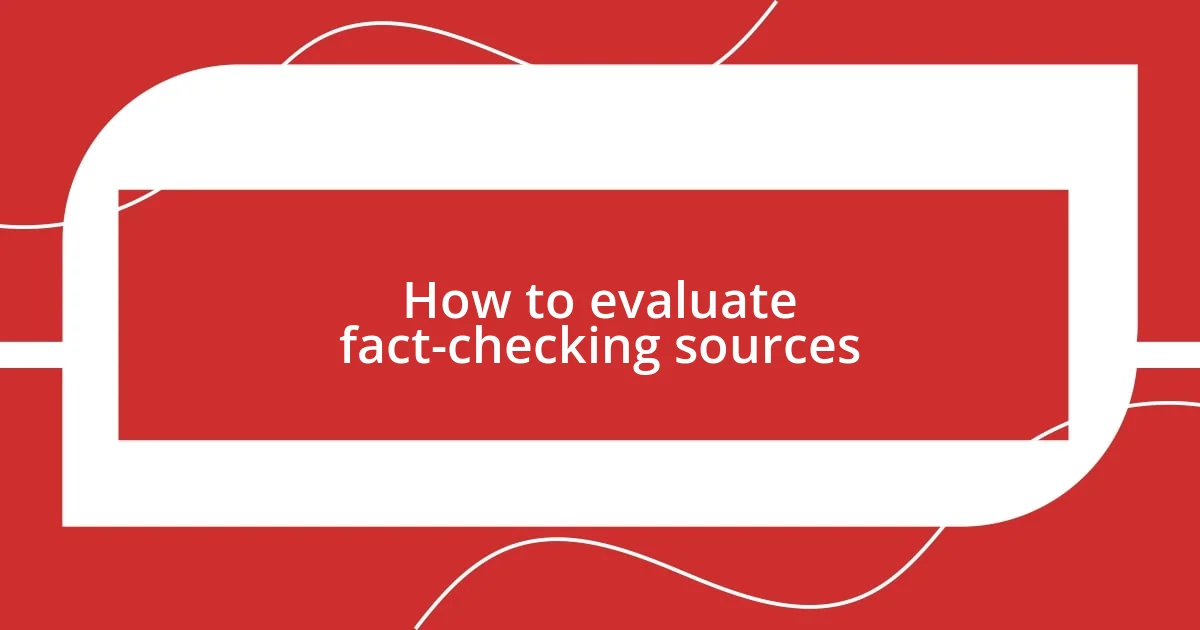
How to evaluate fact-checking sources
When evaluating fact-checking sources, look for transparency in their processes. I always appreciate organizations that openly share their methodologies and criteria for validating information. For example, if a site clearly outlines how they verify claims, it builds my trust. It wonders, though—don’t you think this openness invites readers into the fact-checking journey?
Credibility is another cornerstone. I tend to gravitate towards established organizations known for their integrity. In my experience, a reputation built over years is hard to fake. I recall how much more reassured I felt when a well-respected fact-checking organization addressed a viral conspiracy theory; their track record gave me the confidence to share their findings with my social network.
Lastly, consider the engagement and responsiveness of a source. I often check if they interact with users, respond to queries, or correct mistakes when pointed out. This willingness to engage made a significant difference when I reached out about a potentially misleading statistic I found on their platform. Their prompt and informative reply not only clarified my doubts but also reinforced my belief in their commitment to accuracy. How important do you think responsiveness is when deciding whom to trust?
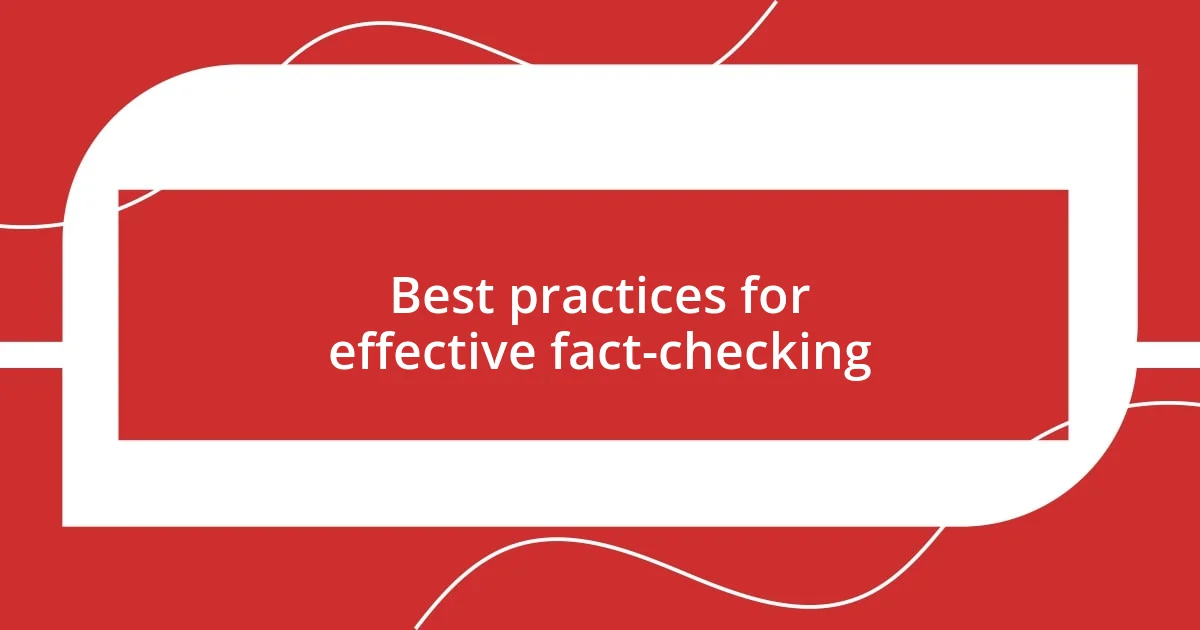
Best practices for effective fact-checking
Best practices for effective fact-checking often start with thorough research. I’ve found that cross-referencing multiple reputable sources can significantly enhance the accuracy of a fact-checked statement. For instance, every time I’ve needed to clarify a contentious claim, diving into academic papers and established news outlets has always yielded a more rounded perspective. It makes me wonder, how many others might overlook this crucial step?
Another essential practice is to maintain an open line of communication with the communities we serve. I vividly recall a time when I hosted a small workshop on misinformation in my neighborhood. Engaging directly with locals allowed me to understand their unique concerns and the common myths they encountered. It dawned on me then that building rapport not only helps in gathering information but also cultivates a space where accurate information can thrive. How often do we forget to listen before we leap into correcting others?
Lastly, documenting the fact-checking process can create a valuable resource for future reference. I remember keeping a detailed log of my fact-checks during an intense political season. This habit not only helped me track recurring topics but also served as a cautionary reminder of the nuances surrounding misinformation. Have you ever thought about how archiving your findings could help you or others navigate the complex landscape of information better?
